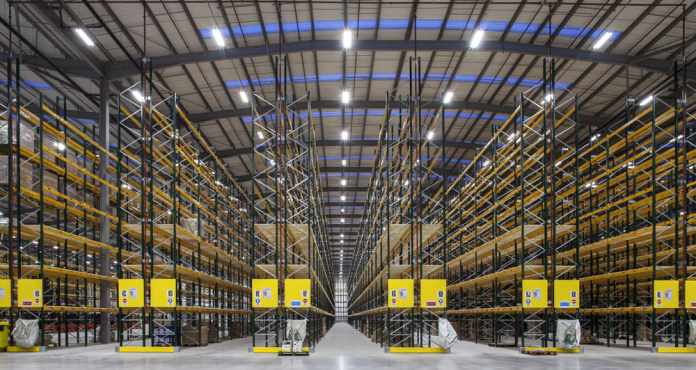Warehouses are integral parts of many different industries. However, operations being carried out at warehouses have changed a lot over these years. They now include advanced practices and technologies like barcoding, automated storage and retrieval system, RFID of the containers, high-rise storage, etc. It’s vital to pay more attention to the quality of work that goes on inside these huge sheds. Here are effectively design your warehouse lighting.
That is why lighting has become an important part of warehouse operations. However, it is important to carefully design your warehouse lighting and evaluate what electrical materials and products are required.
Buying each of them individually can be costly, and you would require the contact of a surplus supplier of electricals. Here are a few tips you can follow while choosing and designing for your warehouse lighting.
Calculate How Much Lighting is Required
There are several design guides that can help you determine the degree of lighting required in your warehouse. Get an understanding of your warehouse’s landscape to determine the right angles where you need to install the lights. To make this calculation accurately, you will need the help of professional experts. Depending on this, you will have to decide which electrical products and materials are required to light up your warehouse.
For instance, more lighting will be required for storage near the roof. If you have canyon-like aisles in your warehouse, you will have to install separate lights for each aisle. Give attention to the beam angles, depending on which you will have to decide how much light is required in a particular area or on a specific object.
Make Use of MH Luminaire
There must be open areas in your warehouse that you must be using for holding materials like pallets and other things. For such areas, you can specify a metal halide luminaire (MH luminaire) with either prismatic refractor housing with an up-light component or an open-bottom aluminum specular reflector with field adjustable position. This allows the widest distribution of light, just like earlier High Pressure Sodium lamp varieties.
Allow Maximum Natural Light
There are several ways to allow natural light into your warehouse, such as leaving spaces on the roof. These will not only make your warehouse brighter but also save money on your energy bills. However, since rain and harsh sunlight may also come with natural light, either make arrangements to keep them at bay or protect your goods from damage-prone areas. Considering this, roof lights are most recommended, which are expensive but keep your goods protected, especially when solar glazing is installed.
It is better to select a glazing system featuring solar control, as it will keep your goods protected from the direct rays of the sun. A better system would be the one that emits a minimum amount of heat, and that allows it to go through the natural source of light.
Do Customization as Per the Environment of the Warehouse
Depending on the size of goods being handled in your warehouse, you will have to consider its landscape and design the warehouse lighting. If there are enough windows in your warehouse, you can light them up in a combination of a few lights. Fix roof lights at a regular distance and customize the lighting as per the layout of your warehouse. This trick will ensure that your entire warehouse is well luminated.
Smart Ways to Reduce Energy Consumption
Give attention to the way your warehouse is operated to cut energy consumption. There may be times when your entire warehouse does not need to be lit up at a time. You can install luminous flux adjustors to save energy and reduce consumption. There may be certain parts in your warehouse that must be receiving enough natural light. You can reduce the intensity of lights in these areas to save energy.
Make Use of Latest Technology
To manage energy consumption better, the use of software like Building Management Systems and Building Information Modeling is gaining huge popularity. Apart from that, LED fixtures consume 60% less energy than traditional lighting systems, like fluorescent lights and HID lights.
LED lights last longer with reduced emission of heat and improved brightness in the area. Certain lights have self-monitoring circuits that report any failure or fault to the central control unit. Hence, by using such advanced technologies, you will reduce energy consumption and save cost.
Since there are so many warehouse lighting options for illuminating a warehouse, go for the one that exactly meets your specific warehouse requirements. Properly lighting up your warehouse will not only enhance the looks of your property but will also enhance work culture in your warehouse to ensure well-being and safety of your employees. With proper lighting, you will also significantly reduce your maintenance costs.








